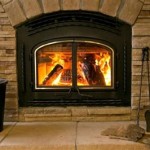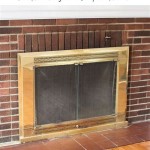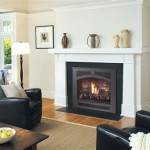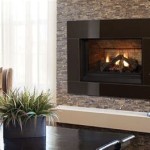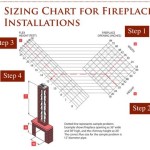Used Wood Stove Inserts For Fireplaces: A Practical Guide
The decision to install a wood stove insert into an existing fireplace is often driven by a desire for increased heating efficiency and a reduction in energy costs. Traditional open fireplaces are notoriously inefficient, with much of the heat generated escaping up the chimney. A wood stove insert offers a closed combustion system, significantly improving heat output and reducing the amount of fuel needed to heat a space. For budget-conscious homeowners, exploring the used wood stove insert market can be a viable option, allowing for cost savings while still achieving the benefits of improved heating.
However, procuring a used wood stove insert requires careful consideration and a thorough assessment of its condition. Unlike purchasing a new unit, there are inherent risks associated with acquiring a used appliance. Understanding these risks and knowing how to mitigate them is crucial for ensuring a safe and effective heating solution. This involves inspecting the unit for damage, confirming compliance with local regulations, and properly installing the insert according to manufacturer specifications.
Key Considerations Before Purchasing a Used Wood Stove Insert
Before embarking on the search for a used wood stove insert, several key factors must be taken into account. These factors will influence the type of insert needed, its overall suitability for the intended fireplace, and its long-term performance.
First, the dimensions of the existing fireplace opening must be accurately measured. This includes the width, height, and depth. These measurements are critical for selecting an insert that will fit properly within the fireplace hearth. An oversized insert will not fit, while an undersized insert may not effectively seal the fireplace opening, reducing its efficiency. It is also important to consider the firebox size in relation to the desired heating area. A larger firebox will generally produce more heat, but will also require more fuel.
Second, understanding local building codes and regulations regarding wood stove insert installations is essential. Many municipalities have specific requirements regarding the type of venting system used, the clearance distances required around the insert, and the need for permits and inspections. Failure to comply with these regulations can result in fines or the forced removal of the insert. Contacting the local building department prior to purchasing a used insert is highly recommended to ensure compliance.
Third, the type of wood that will be burned should be considered. Different wood species have varying heat outputs and burn rates. Hardwoods, such as oak and maple, generally produce more heat and burn longer than softwoods, such as pine and fir. However, hardwoods can also be more expensive and require longer drying times. Choosing the right type of wood will optimize the performance of the insert and minimize smoke production.
Essential Inspection Points for Used Wood Stove Inserts
A thorough inspection of a used wood stove insert is paramount to identify potential problems and ensure its safety and functionality. This inspection should be conducted before any purchase agreement is finalized.
The first area to examine is the firebox. Check for any signs of cracks, warping, or excessive rust. Cracks can compromise the structural integrity of the firebox and lead to dangerous gas leaks. Warping can indicate that the insert has been overheated, potentially damaging internal components. Excessive rust can weaken the metal and reduce its lifespan. Pay particular attention to the welds around the door and seams, as these are common areas for failure.
Next, inspect the door and its sealing mechanism. The door should close tightly and securely, creating an airtight seal. A damaged or worn-out door gasket can allow air to leak into the firebox, reducing efficiency and increasing smoke production. Test the door latch to ensure it functions properly and securely holds the door closed. Examine the glass for cracks or damage, as this can also compromise the seal.
The venting system should also be carefully inspected. This includes the flue collar and any connecting pipes. Check for signs of corrosion, blockage, or damage. The venting system is responsible for removing harmful gases and smoke from the insert. A damaged or improperly installed venting system can create a serious fire hazard or expose occupants to dangerous carbon monoxide.
Installation and Safety Considerations
Proper installation is crucial for the safe and efficient operation of a wood stove insert. Even a well-maintained used insert can pose a risk if installed incorrectly. It is generally recommended to have a qualified professional install the insert, ensuring compliance with local codes and manufacturer specifications.
The first step in the installation process is to thoroughly clean the existing chimney. This removes creosote buildup, which is a highly flammable substance that can cause chimney fires. A professional chimney sweep is best equipped to perform this task safely and effectively. The chimney should also be inspected for any structural damage, and repairs should be made as needed.
The insert should be properly connected to the venting system using approved materials and techniques. The venting system must be sized correctly for the insert and should extend above the roofline to ensure proper draft. All connections should be sealed tightly to prevent leaks. Carbon monoxide detectors should be installed in the home to provide an early warning of any potential leaks.
After installation, it is important to follow the manufacturer's instructions for operating the insert. This includes using the correct type of fuel, maintaining proper airflow, and regularly cleaning the firebox and venting system. Regular maintenance will help to ensure the safe and efficient operation of the insert and prolong its lifespan. Following the guidelines provided not only ensures the longevity of the unit but also safeguards the home and its inhabitants from potential hazards associated with improper usage.

Rais 60 Insert Wood Fireplace For

Preowned Used Fireplaces Stoves Inserts For At Warming Trends

High Quality Decorative Indoor Used Wood Stove Insert Burning Fireplace China Made In Com

Buck Stove Model 91 Insert Fireplace Buy Hearth Patio

High Quality Decorative Indoor Used Wood Stove Insert Burning Fireplace China Made In Com

High Quality Decorative Indoor Used Wood Stove Insert Burning Fireplace China Made In Com

Why A Wood Burning Fireplace Insert Bethesda Md Service

Why A Wood Burning Fireplace Insert Bethesda Md Service

Fireplace Inserts Everything You Need To Know Full Service Chimney

High Quality Decorative Indoor Used Wood Stove Insert Burning Fireplace China Made In Com

